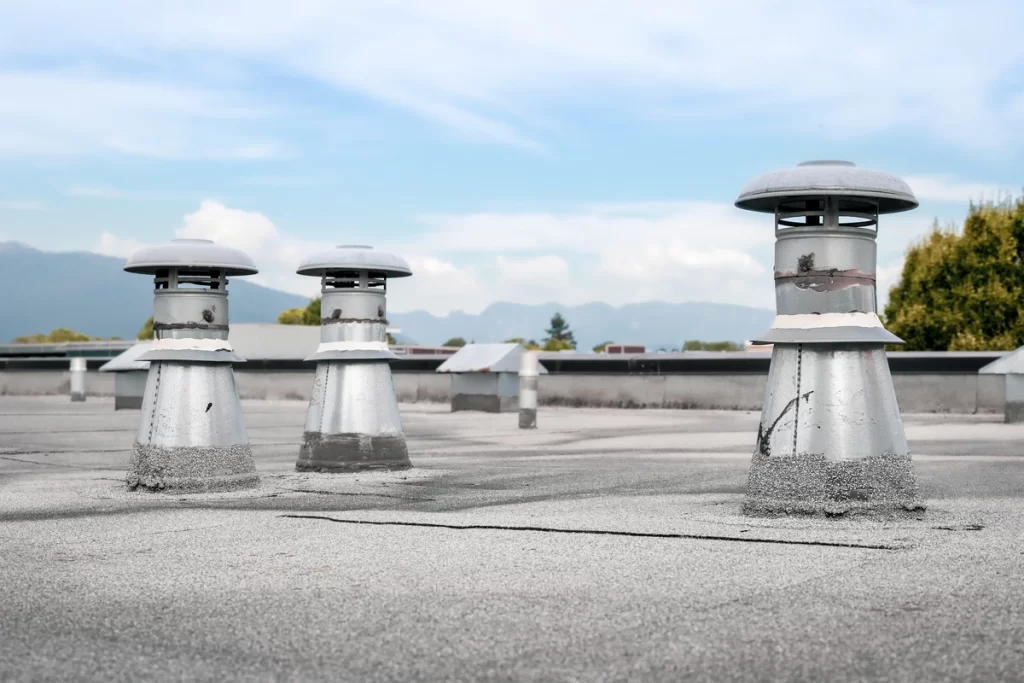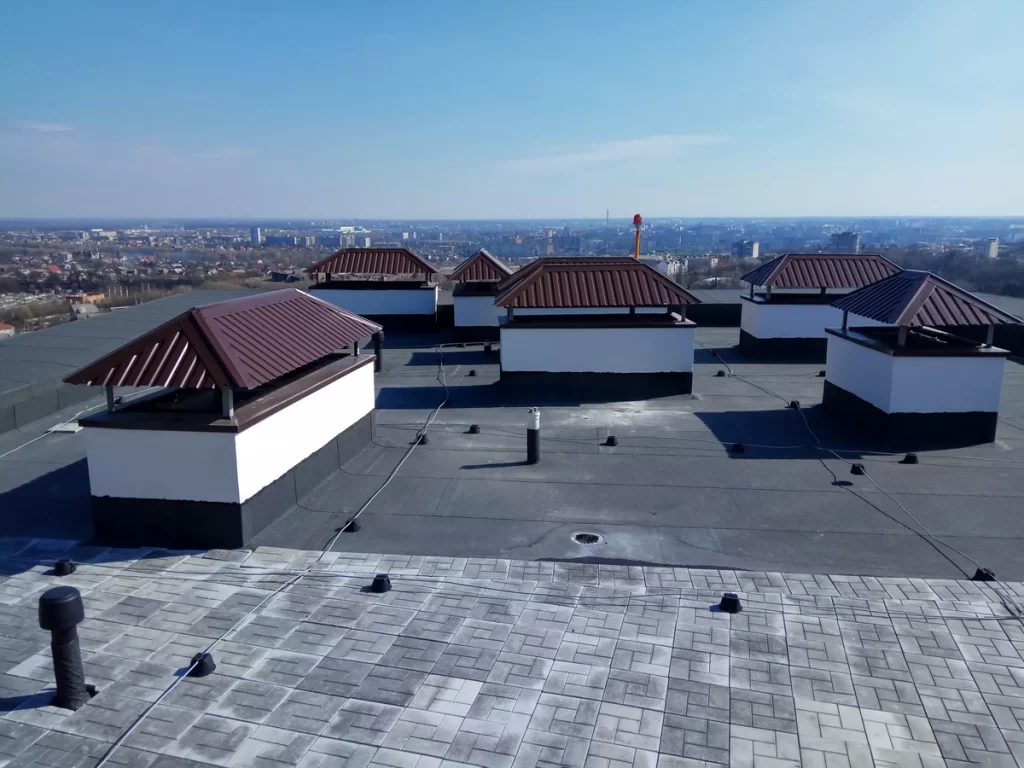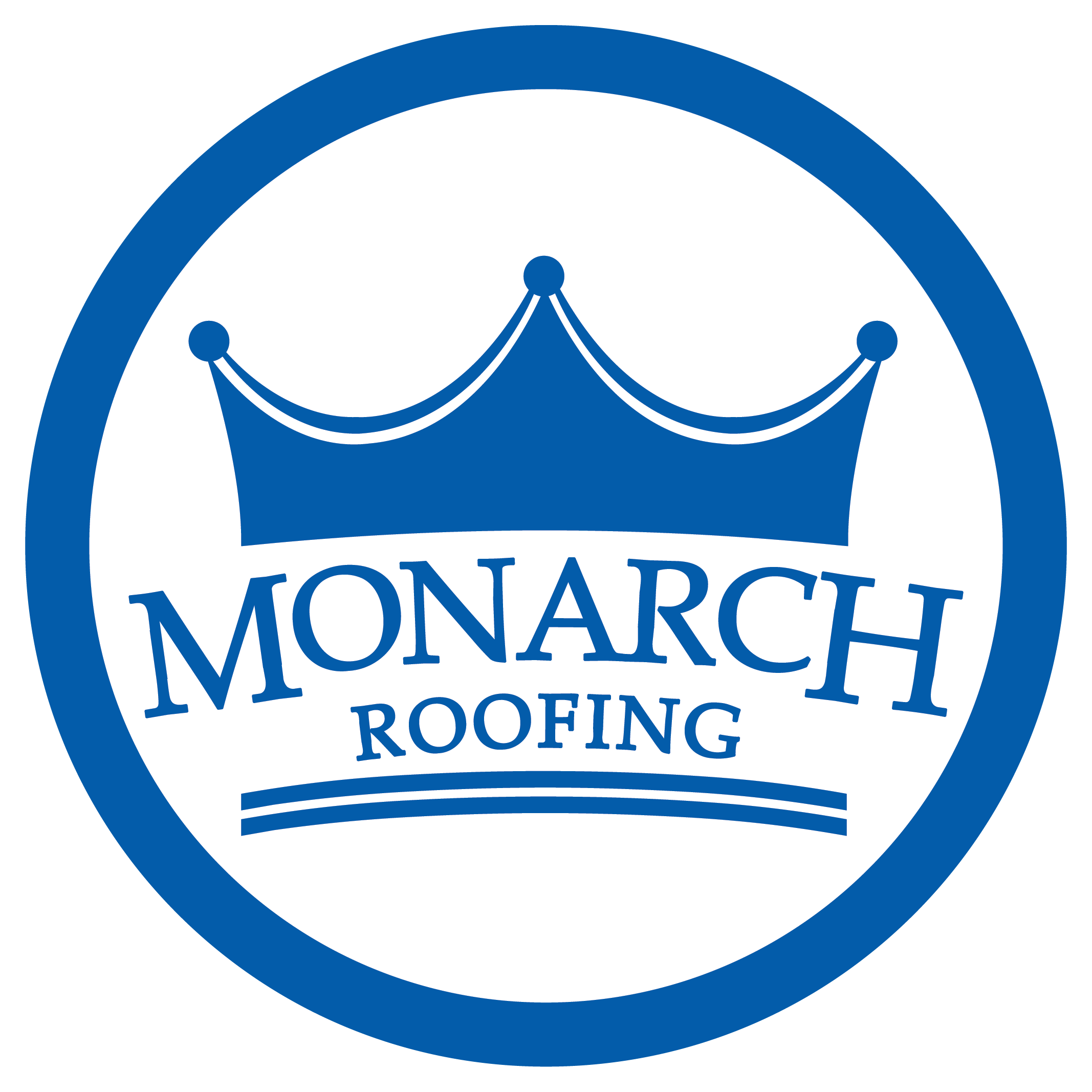Are you in the process of getting roof repairs, maintenance, or even a full replacement? Dealing with the intricacies of a well-maintained, durable, and long-lasting roofing system comes with some research into all of the layers, materials, and considerations when it comes to your roof. Today, we’ll discuss one such aspect — the roof vents. You may be wondering — what’s the big deal about roof vents, anyway? I’ve got a business to run.
Well, when it’s time to seek out prompt roofing services, ventilation is often a topic that doesn’t receive the attention it deserves. Yet, proper ventilation is crucial for maintaining the integrity of any roof structure, especially flat roofs.
Flat roof vents, often overlooked, play a vital role in ensuring adequate airflow and preventing common ventilation issues. In this guide, we delve into the world of flat roof vents, exploring:
- Their functions
- Various styles
- Installation costs
- The perils of neglecting proper ventilation
The Importance of Ventilation in Flat Roofs

Flat roofs, prevalent in commercial and modern residential buildings, present unique challenges when it comes to ventilation. Unlike pitched roofs, which naturally allow hot air to rise and escape through the ridge, flat roofs trap heat and moisture, creating a breeding ground for problems such as:
- Heat Build-Up: Without proper ventilation, flat roofs absorb and retain heat, leading to increased indoor temperatures and higher energy costs.
- Moisture Accumulation: Condensation can form within the roof structure, promoting mold growth, wood rot, and compromising the roof’s integrity over time.
- Ice Dams: In colder climates, inadequate ventilation can contribute to the formation of ice dams along the roof edges, leading to water damage and leaks.
- Premature Roof Aging: Excessive heat and moisture can accelerate the deterioration of roofing materials, reducing their lifespan and necessitating costly repairs or replacements.
How Flat Roof Vents Work
Flat roof vents are designed to facilitate the exchange of stale, hot air with fresh outdoor air, effectively regulating temperature and moisture levels within the roofing system. They accomplish this through two primary mechanisms:
Passive Ventilation:
Passive vents, such as roof louvers and soffit vents, rely on natural airflow dynamics to draw air into the attic space and exhaust it through the roof. These vents are strategically placed to take advantage of prevailing wind patterns and the stack effect, where warm air rises and exits through higher openings.
Mechanical Ventilation:
In cases where passive ventilation alone is insufficient, mechanical vents, such as powered attic fans or turbine vents, can be installed to actively expel hot air from the attic space. These vents are equipped with motors or turbines that generate airflow, helping to maintain optimal ventilation levels.
5 Different Flat Roof Vent Styles

Flat roof vents come in various styles and configurations, each suited to different roofing designs and ventilation requirements. Some common types include:
1) Roof Louvers:
These low-profile vents are installed along the roof’s perimeter or at key intervals to allow air to enter and exit the attic space. Roof louvers are available in different materials, including aluminum, copper, and plastic, and can be painted to match the roof’s color scheme.
2) Soffit Vents:
Positioned along the underside of the roof’s overhang, soffit vents provide intake airflow, drawing fresh air into the attic from the eaves. They work in tandem with ridge vents or roof louvers to facilitate air circulation.
3) Ridge Vents:
Installed along the peak of the roof, ridge vents serve as exhaust points for hot, stale air rising from the attic. They create a continuous ventilation channel along the roof’s ridge, maximizing airflow efficiency.
4) Powered Attic Fans:
These electrically powered fans are mounted on the roof or gable wall and actively expel hot air from the attic space. Powered attic fans are particularly useful in areas with limited natural ventilation or excessive heat buildup.
5) Turbine Vents:
Also known as whirlybird vents, turbine vents utilize wind energy to create airflow within the attic. As wind blows over the vents, the turbine rotates, drawing hot air out of the attic and promoting ventilation.
Cost Considerations for Flat Roof Vent Installation
The cost of installing flat roof vents can vary depending on factors such as the type of vent selected, the size and complexity of the roofing system, and labor costs in your area. On average, homeowners can expect to pay anywhere from $300 to $1500 for flat roof vent installation, with the following breakdown:
- Material Costs: The price of flat roof vents themselves can range from $10 to $200 per vent, depending on the style, material, and brand. Mechanical vents such as powered attic fans may incur additional costs for electrical wiring and installation.
- Labor Costs: Professional installation is recommended for ensuring proper vent placement and sealing to prevent leaks. Labor costs typically range from $50 to $150 per hour, with the total installation time varying based on the complexity of the project.
- Additional Expenses: In some cases, structural modifications or roof repairs may be necessary before installing vents, adding to the overall project cost. It’s essential to obtain multiple quotes from reputable contractors and factor in any potential additional expenses when budgeting for vent installation.
While the upfront costs of vent installation may seem daunting, they pale in comparison to the long-term savings and benefits of a well-ventilated roof. Proper ventilation can extend the lifespan of your roof, reduce energy consumption, and prevent costly repairs down the line.
The Dangers of Poorly Ventilated Roofs
Neglecting proper ventilation can have severe consequences for both your roof and your property as a whole. Some of the dangers associated with poorly ventilated roofs include:
- Roof Leaks and Water Damage: Without adequate airflow to remove moisture from the attic space, condensation can accumulate on the underside of the roof deck, leading to water damage, rot, and mold growth.
- Decreased Energy Efficiency: A hot, stuffy attic can significantly impact the energy efficiency of your home, forcing your HVAC system to work harder to maintain comfortable temperatures. This results in higher energy bills and increased wear and tear on your cooling equipment.
- Compromised Indoor Air Quality: Mold spores and other airborne contaminants thrive in humid, poorly ventilated environments, posing health risks to occupants and exacerbating respiratory issues such as asthma and allergies.
- Structural Damage: Over time, moisture buildup can compromise the structural integrity of your roof, causing wood rot, sagging, and even roof collapse in extreme cases. Repairing extensive damage caused by inadequate ventilation can be costly and disruptive.
- Fire Hazard: In some instances, trapped heat and flammable materials in the attic can create a fire hazard, increasing the risk of a catastrophic blaze.
Learn More About Flat Roof Ventilation
Flat roof vents are an essential component of any roofing system, playing a crucial role in maintaining proper ventilation and safeguarding against common issues such as heat buildup, moisture accumulation, and premature roof aging. Don’t overlook the importance of ventilation—give your roof the breath of fresh air it deserves.
Contact Monarch Roofing today to make sure your flat roof ventilation is up to par!





